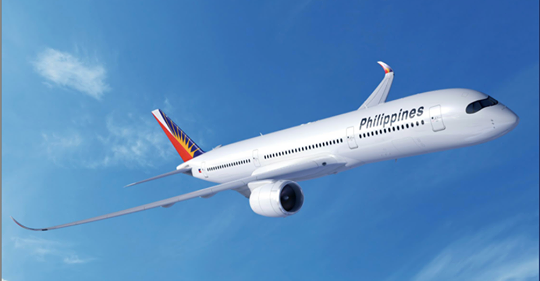
Philippine Airlines recorded the biggest loss in its corporate history last year due to what its chief described as “unsustainable long-term debt and lease obligations [in] billions of US dollars,” aggravated by the Taal volcano eruption and the ongoing COVID-19 crisis.
In a letter sent to the flag carrier’s employees last week, president and COO Gilbert Santa Maria said PAL had sustained a net loss of $208 million in 2019 —equivalent to P10.6 billion at the prevailing exchange rate— and marking the third consecutive year of losses for the Lucio Tan-owned firm.
“To survive, our flag carrier needs to find a way to profitability, reduce its debt and achieve a higher level of competitiveness,” he said. “To this end, we have been working on turnaround initiatives to strengthen revenue generation and manage costs.”
Last Friday, PAL announced a retrenchment program affecting 300 employees and company sources indicated that this number could rise. The airline has a total headcount of 6,087 employees, compared to budget carrier Cebu Pacific’s staff compliment of 4,000.
The airline’s publicly listed parent, PAL Holdings Inc., reported a net loss of P4.3 billion in 2018 and P7.3 billion in 2017.
Last week, PAL’s board also approved an increase in the airline’s authorized capital stock from P13 billion to P30 billion —a prelude to “the infusion of fresh capital to help bolster our debt position and buy us time,” the airline chief said.
Sources told the Inquirer that the company’s owners had been actively scouting for a white knight to shore up the airline’s capital, although no firm buyer has yet been identified.
Santa Maria said the airline’s financial troubles were also worsened by two force majeure incidents recently.
“Unfortunately, the closure of our Manila hub during the Taal Volcano eruption last January and the ongoing COVID-2019 crisis that shut down all our flights to mainland China, Hong Kong and Macau, has only worsened what was already a difficult situation,” he said.
To survive this difficult phase, the PAL chief said the airline needed to “generate more revenue by increasing yields and loads and by optimizing [its] network; create more revenue streams in ancillary products like cargo, loyalty programs and charter operations, and drive a digital transformation for greater efficiency and reliability.” Also needed, he said, were “a comprehensive and aggressive approach to managing our costs, including reduced maintenance, repair and overhaul, and ground operations costs, including catering; reduce spending for key commodities such as fuel and services, and an organization restructured for greater efficiency and effectiveness with increased utilization, simplified processes, greater scale and investment in automation.”
Apart from the retrenchment program announced last Friday, PAL also initiated a voluntary separation program (VSP) for eligible long-serving employees as a first crucial step in a necessary restructuring effort to reduce overhead costs.
“Those whose VSP applications were accepted will be informed in the next few days,” he said, adding that he needed the airline’s employees’ “patience, understanding and cooperation as we take tough and decisive action” to help ensure PAL’s survival.
“I will not sugarcoat the harsh reality for our colleagues who will be affected by this retrenchment, they too helped build the airline and they will always be fellow members of the PAL family,” he said in his letter to the staff.
“But many more colleagues and other stakeholders will face a harsher reality if we fail and PAL ceases to fly after almost eight decades, so we must continue to face the challenges that beset us, and overcome them,” Santa Maria said. “We are all fighting for the future of Philippine Airlines, and I have faith that we will prevail.”